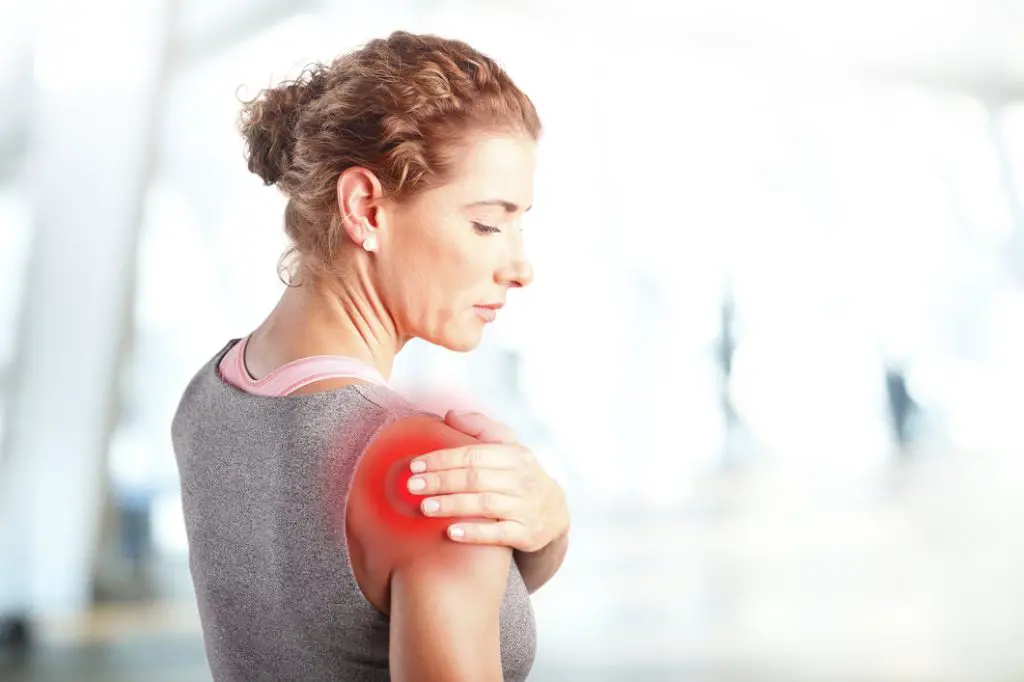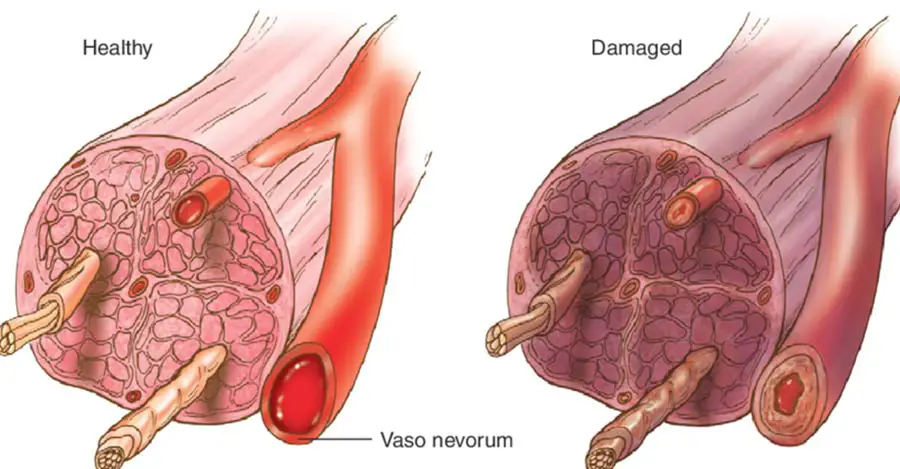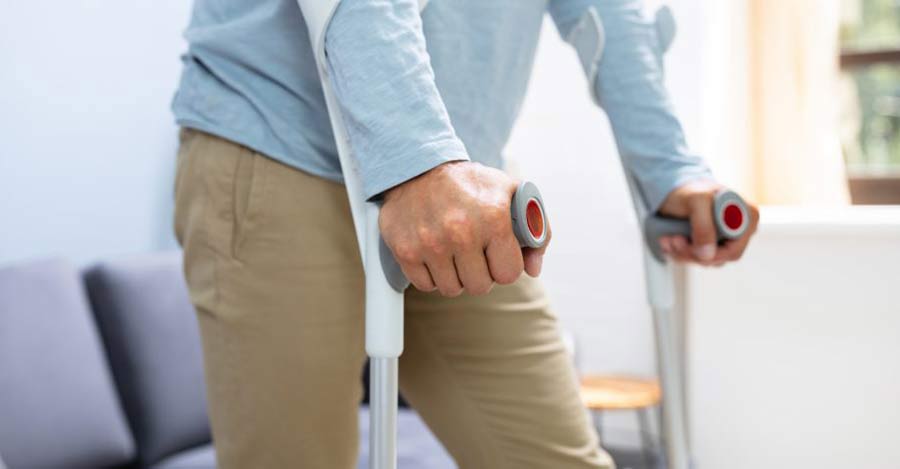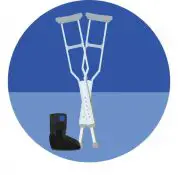Problems With Crutches And What To Do About Them
We are going to discuss the problems and solutions surrounding the use of crutches. That way, you don’t have to spend hours combing the web searching for problems with crutches and what to do about them you may never find.
The 6 Problems Associated With Using Crutches
When crutches are used the wrong way, they can cause you many unnecessary problems. Also, many of the injuries you can get from incorrect crutch use can be painful and unpleasant.
Fortunately, many of these problems we will discuss below are preventable.
Sore Armpits from Crutches

One of the most common complaints seen with those using crutches is sore armpits. When you use crutches, you place most of your body weight on them when you maneuver. This causes much strain to the armpit region of your body.
Most people make the mistake of wedging crutches too securely under the armpits. A wedged crutch makes you perform a clenching motion, and each step causes pain.
Do you want to ease the pain you feel and prevent sore armpit injuries? If so, you should position your crutches below your armpits. Additionally, as an extra precaution, ensure your crutches are the right height.
Check when you stand upright. Your crutches should not be more than one to two inches below your underarms. Moreover, you can opt to use a soft glycerin-based gel as padding.
Shoulder Pain from Crutches

When you’re using crutches, you might not realize how much strain you place on your shoulders. Along with armpit pain, shoulder pain is almost as common. Should you be doing most of the work with your shoulders, you are likely tensing the muscles in them.
This pain will gather in your shoulders and create pressure points. To fix this, you need to distribute your weight between your arms, legs, and shoulders. Take note of how much pain you are in, as it can be easy to miss shoulder pain until your muscles become tense. You don’t want to seek out physical therapy or a chiropractor. Seeking one out could prolong the healing time of your other injuries.
Rib Pain from Crutches

Rib pain is one of the most common complaints that people using crutches have. When you use this mobility aid, you place continuous pressure from the saddle of the crutch to your ribs. With the constant stress, your ribs become bruised, and you even hurt your armpits.
Additionally, rib pain also occurs when you use the wrong size crutches or angle them wrong. Incorrect crutch sizing causes you to hunch over and strain your core muscles. This action makes your ribs ache.
You needn’t worry too much as you can solve these issues. Try resize your crutches to one to two inches below your armpits or angle your crutch tips closer to your feet.
Hand Pain from Crutches

Clasping crutches while you maneuver about your day often causes hand pain. When using crutches on a long-term basis, you will notice that you place pressure on the upper part of your hands. This causes sprains and muscle spasms. It can also cause numbness, carpal tunnel syndrome, and blistering.
Alleviating hand pain caused by crutch use can take some time. You will need to determine how you can place your hands to lessen the strain your hands feel. Additionally, you should try not to lean forward too much on your forearms and hands. Leaning too much causes more strain and a higher chance of you developing an injury.
Skin Irritation from Crutches
Using crutches for rehabilitation purposes or a long-term illness often experience skin irritation. With most people, their skin irritation is caused by the saddle of a crutch. Yet, others have an allergic reaction to the materials used in the padding of a crutch.
Commonly skin irritation will occur on a person’s underarms or appear on a person’s hands or forearms. Crutches that feature wood or leather are the biggest culprits. They often cause people to experience skin irritation. Therefore, you should try to avoid these materials. Additionally, if possible, add cushioning to the saddle to prevent chafing and rubbing.
Damaged Nerves from Crutches

One of the scariest side effects of crutches is nerve damage. When you use crutches, the saddle can be ill-designed or feature uncomfortable materials. An ill-designed crutch places pressure on your underarms and can cause nerve damage.
Conventional crutches with an extended length place more strain. These crutches sometimes cause nerve damage. So it’s best to avoid these. Fortunately, this side effect is rare and doesn’t happen to everyone.
You can prevent this issue by trying out alternative mobility aids. Additionally, using the correct crutches for your height and weight will also help. Moreover, you should consider crutches with an ergonomic design. Ergonomic crutches are the least likely to cause nerve damage and injury.
Tips to quick ease the crutch pain problems
The best solution to stop the problems mentioned above is to use your crutches correctly. Most of the issues we have discussed are caused by misusing your crutches.
That’s why you will find below a few tips you can use when walking with crutches. They will help you ease or negate the problems crutch users experience.
- You need always to take small steps and move your crutches approximately 18 inches in front of you. When doing this, remember to balance the bulk of your weight on your less injured side.
- When walking, you need to place your crutch tips firmly on the ground. With each step you take, you must lean into your crutches and allow your body to swing forward slowly.
- Don’t ever place your weight on your injured leg. Instead, rest your weight on your crutch handles.
- When you are walking, you need to place your uninjured leg on the floor ahead of your crutches. Once you have successfully done this, you need to balance and move your other leg to join the uninjured one.
- Try not to let your crutch saddle touch your armpits. Instead, keep the majority of your weight supported with your hands.
- Don’t attempt to rush or walk too quickly. Rushing will place more strain on your injuries and cause you to slip and fall.
Make Crutches Comfortable - Important Way to ease crutch pain problem

Uncomfortable crutches can cause you more pain or create new injuries. Do you want to ease your suffering or prevent discomfort and injuries from getting worse? If so, you should consider the three ways we have listed. They will help make your crutches more comfortable.
- Add Padding To The Grip
- Add Cushioning On Top
- Add Cushioning Beneath
- Properly Adjust Your Crutches
- Choose A Crutch Alternative
Final Words
As you can likely tell, there are quite a few problems those using crutches face. I had experienced a few of these side effects when I was unaware of how to fix or prevent them.
Yet, now you know that these issues can be resolved. In addition, you can reduce much of the pain and discomfort you are experiencing.

